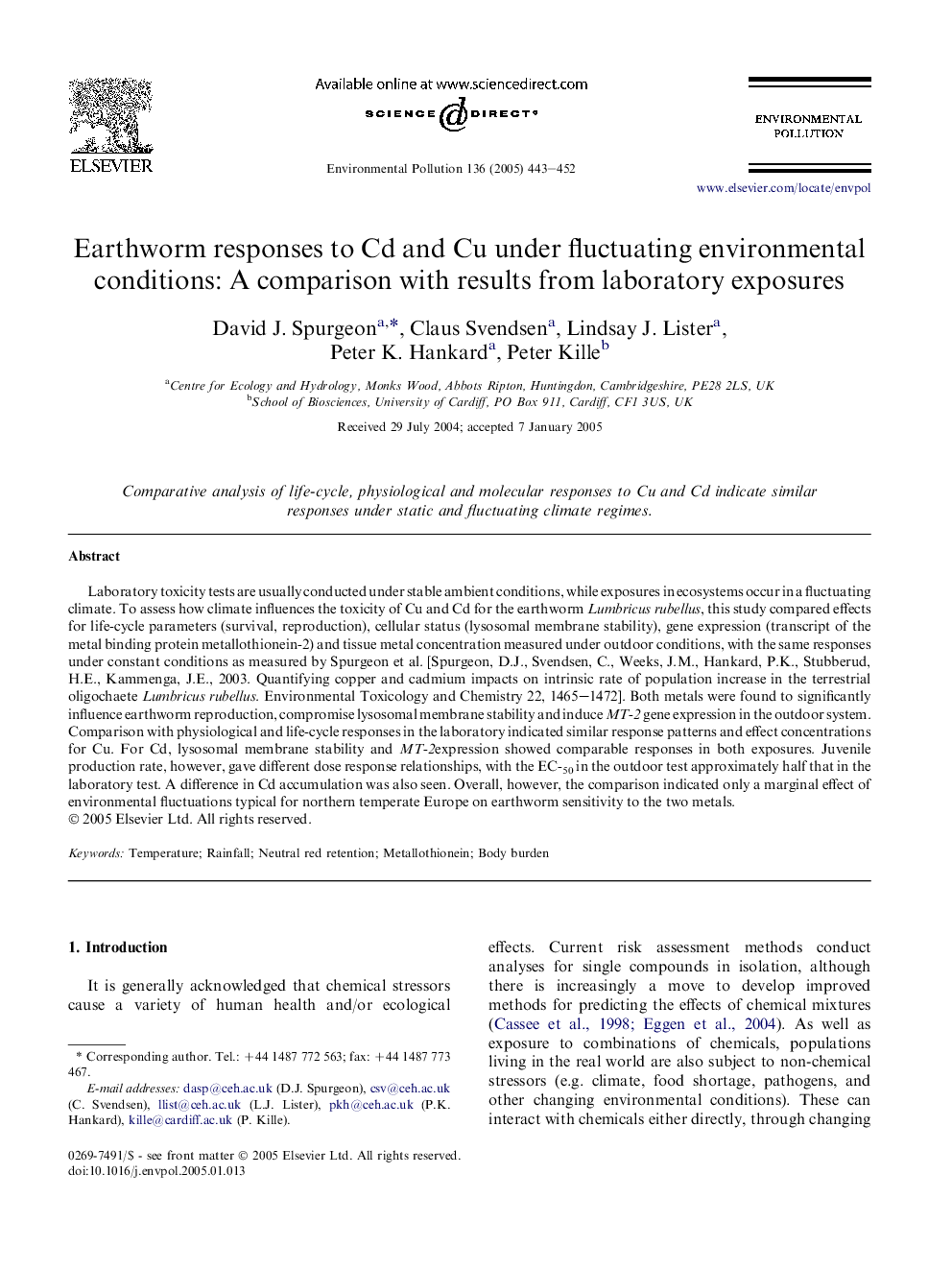| Article ID | Journal | Published Year | Pages | File Type |
|---|---|---|---|---|
| 9456244 | Environmental Pollution | 2005 | 10 Pages |
Abstract
Laboratory toxicity tests are usually conducted under stable ambient conditions, while exposures in ecosystems occur in a fluctuating climate. To assess how climate influences the toxicity of Cu and Cd for the earthworm Lumbricus rubellus, this study compared effects for life-cycle parameters (survival, reproduction), cellular status (lysosomal membrane stability), gene expression (transcript of the metal binding protein metallothionein-2) and tissue metal concentration measured under outdoor conditions, with the same responses under constant conditions as measured by Spurgeon et al. [Spurgeon, D.J., Svendsen, C., Weeks, J.M., Hankard, P.K., Stubberud, H.E., Kammenga, J.E., 2003. Quantifying copper and cadmium impacts on intrinsic rate of population increase in the terrestrial oligochaete Lumbricus rubellus. Environmental Toxicology and Chemistry 22, 1465-1472]. Both metals were found to significantly influence earthworm reproduction, compromise lysosomal membrane stability and induce MT-2 gene expression in the outdoor system. Comparison with physiological and life-cycle responses in the laboratory indicated similar response patterns and effect concentrations for Cu. For Cd, lysosomal membrane stability and MT-2expression showed comparable responses in both exposures. Juvenile production rate, however, gave different dose response relationships, with the EC-50 in the outdoor test approximately half that in the laboratory test. A difference in Cd accumulation was also seen. Overall, however, the comparison indicated only a marginal effect of environmental fluctuations typical for northern temperate Europe on earthworm sensitivity to the two metals.
Related Topics
Life Sciences
Environmental Science
Environmental Chemistry
Authors
David J. Spurgeon, Claus Svendsen, Lindsay J. Lister, Peter K. Hankard, Peter Kille,
